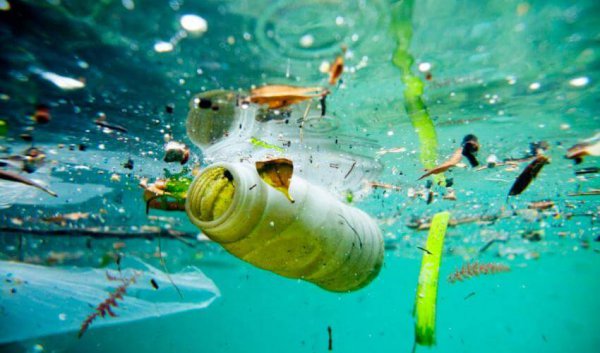Marine pollution is defined as the introduction of substances to the marine environment directly or indirectly by man resulting in adverse effects such as hazardous to human health, obstruction of marine activities and lowering the quality of sea water.
Sources
1. Municipal waste & sewage from residences and hotels in coastal towns are directly discharged into sea
2. Pesticides and fertilizers from agriculture which are washed off by rain enter water courses & finally to sea. India is estimated to use 55,000 tons of pesticides annually and about 25 percent of it is carried to ocean.
3. Petroleum & oil washed off from roads normally enter sewage system & finally into seas
4. Ship accidents & accidental spillage at sea can therefore be very damaging to the marine environment.
5. Off shore oil exploration also pollute the sea water to a large extent.
6. Dry docking: All ships periodic dry docking servicing; cleaning the hulls etc. during this period when cargo compartments are emptied, residual oil goes into sea.
7. Pollution due to organic wastes: When O2 concentration falls 1.5 mg/l, the rate of aerobic oxidants reduced and replaced by the anaerobic bacteria that can oxidize the organic molecules without the use of oxygen.
8. Pollution due to oil: Crude oil is transported by sea after a tanker has unloaded its cargo of oil; it has to take on sea water ballast for return journey. This ballast water is stored in cargo compartments that previously contained oil. During unloading of cargo certain amount of oil remains clinging to the walls of container & this may amount to 800t in a 200,000t tankers. The ballast water thus contaminated with oil. When fresh crag of oil is to be loaded these compartments are clean with water which discharges the dirty ballast along with oil into sea.
9. Tanker accidents: In the natural process, a large number of oil tanker accidents happen every year. Sometimes this can results in major disasters.
10. Volcanic eruptions in the sea.
11. Deep sea mining is a relatively new mineral retrieval process that takes place on the ocean floor. Ocean mining sites are usually done at about 1,400 – 3,700 meters below the ocean’s surface. The vents create sulfide deposits, which contain precious metals such as silver, gold, copper, manganese, cobalt, and zinc. These raise questions about environment damage to surrounding areas. Removal of parts of the sea floor will result in disturbances to the benthic layer, and habitat of benthic organisms. Beside from direct impact of mining the area, leakage, spills and corrosion would alter the mining area’s chemical makeup.
Case study: Marine Pollution in Tamil Nadu: Oceans not spared
Industrial pollution has threatened the natural habitats of pearls in the
pearl banks of Tuticorin coast in the Gulf of Mannar. It has affected fish and other organisms as far as 30 kms south of Tuticorin due to effluents released from chemical industries. Tannery wastes have caused the pollution of coastal waters from Chennai to Vedaranyam. The effect of diversity of phytoplankton ecology of mangrove estuaries of Tuticorin is greatly affected by industrial effluents. The Chennai coastal waters showed high levels of pesticides like DDT, lindane, endosulphan and heptachlor. The bioaccumulation of these pesticides in marine organisms could pose major health hazards.(Ref:.Sushmitha Baskar and R.Baskar)
Effects of marine pollution:
· Apart from causing Eutrophication, a large amount of organic wastes can also result in the development of ‘red tides’. These are phytoplankton blooms because of which the whole area is discolored.
· Commercially important marine species are also killed due to clogging of gills and other structures.
· When oil is spilled on the sea, it spreads over the surface of the water to form a thin film called as oil slick. This damages marine life to a large extent. Commercial damage to fish by tainting which gives unpleasant flavor to fish and sea food reduces market values of sea food and causes death of birds through its effect on feathers. Birds often clean their plumage by pruning and in the process consume oil which can lead to intestinal, renal and liver failure.
· For salt marshy plants oil slick can affect the flowering, fruiting and germination.
· Organic waste addition results in end products such as hydrogen sulphide, ammonia and methane which are toxic to many organisms. This process results in the formation of an anoxic zone which is low in its oxygen content; from which most life disappears except for anaerobic microorganisms and renders the water foul smelling.
· The coral reefs are the productive ecosystems offer many benefits to people. These coral reefs are threatened by
a) the sediments from deforestation carried by the runoffs.
b) the agricultural and industrial chemicals reaching through river discharges. To mention an example, River Ganga is estimated to carry 1.5 billion tons of sediments due to deforestation and intensive farming in India,Bangladesh and Nepal through which it flows to Bay of Bengal.
· Drill cuttings dumped on the seabed result in the production of toxic sulphides in the bottom sediment thus eliminating the benthic fauna.
Control measures of marine pollution:
1) Introduction of sewage treatment plants to reduce BOD of final product before discharging into sea.
2) Cleaning oil from surface waters and contaminated beaches can be accelerated through the use of chemical dispersants which can be sprayed on the oil.
3) Load on top system reduce oil pollution cleaned with high pressures jets of water.
4) Crude oil washing: The clingage is removed by jets of crude oil while the cargo is being unloaded.


